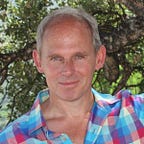The Entangled Activist by Anthea Lawson
Anthea Lawson is an activist with a formidable reputation. Trained as a journalist, held numerous high profile campaigning positions, uncovered scandals and frauds, been instrumental in getting laws passed and with access to the corridors of power. Despite this enviable status, she encountered terrible, disrespectful working practices at the NGOs where she worked. Numerous episodes of burnout and growing dissatisfaction with how the activism business worked, led her to take a long hard look at activism and, as a result, write this book.
Lawson does not dismiss activism. The world still works in a way that exploits the vulnerable and benefits the powerful. The growing realisation of the nature of the climate crisis has brought this sharply into focus and made the need for resistance even greater. But she is deeply concerned that activism often mirrors the brutality of the world it is attempting to change.
It is not difficult to imagine that business and government, driven as they are by power and money, should function without concern for individual people. Even people that are important to how these behemoths function. But surely activism, rooted in a desire for justice and truth, should be different? Yet time and again, it lets down those within the activist establishment and even those people it is supposed to be helping.
Lawson developed the idea of entanglement. Whilst activists seek to expose wrongdoing and put in place arrangements to prevent repeat offending, these tasks are undertaken within the same structure as the offending. The underlying organisational structures of activism are borrowed from the world activists wish to change and hence replicate many of the failings of this world. For all their good intentions, activists are part of what they are trying to change, a system characterised by “separation, dominance and exceptionalism”.
Entanglement takes place in many ways. Lawson points out that many activists within NGO type campaigning structures are exactly the same type of white, well-educated middle-class people who also run the structures that are the object of activist attention. The same culture, schools and universities produce both sides of the discussion.
She exhaustively catalogues her own entanglements, her upbringing and experiences, and then extends out into the broader picture to describe just how close so many activists are to the people they define themselves against. This has an incredible shrinking effect. Conflicts that seemed to be about life and death, suddenly become a discussion between people with very similar backgrounds, if not actual friends.
So what do we do? The climate crisis is bearing down on us, people are not having their rights respected, the powerful continue to abuse their power. These things are real and bad and demand a response.
In the latter part of the book, Lawson moves from her critique of activism to a re-construction of it. She explains how she started to step out of the 24/7 hectic headspace and spent more time in nature, becoming as she puts it “a porous, mossy, expansive, soft, bodily self”. She starts to think about approaches beyond winning the argument and beyond the adrenalin-fuelled confrontations that are such a hallmark of activism.
Chapter 11 begins with the story of retired diplomat John Aston’s open letter to the CEO of Shell, Ben van Buerden. The letter was not a full-frontal assault on the CEO of a climate-criminal organisation. Rather, it was a man-to-man appeal, seeking areas of common interest. Crucially, it was an attempt by a campaigner to step into the shoes of his adversary and understand how he saw the world and why he did what he did. Lawson describes this process of finding one’s own intuition and motivation and setting it free of the cultural straitjacket, as learning to sing again.
This is a beautiful phrase. Singing requires both confidence in one’s abilities and a song to sing. A song transcends arguments and tugs at the heart. Surely a song is a more fitting expression of the passion we feel fuelling our activism. When we act out of love and passion, should not our expression be more like a song than gunfire?
This book may not mean much to someone who is new to activism and who is burning with righteous anger. But when an activist starts to examine what they are doing and think about the results, or lack thereof, of their actions, this is the book to turn to. Lawson’s frankness and willingness to use her own experience as the basis for this radical reimagining of activism is powerful and inspiring.
________________________________
If you would like to keep up with what I’m doing, please join my email newsletter
https://www.chrisjerrey.photography/newsletter/
